By Beth Schreibman Gehring
“White coral bells upon a slender stalk,
Lilies of the valley dress my garden walk.
Oh, don’t you wish that you could hear them ring?
That will happen only when the fairies sing.”
– Traditional Folk Song
 Surely, many of you cherish this beautiful children’s round, its authorship lost to time; its timeless melody, ethereal in nature, much like the lily of the valley itself. As a child, I sang this with my siblings, and now, I eagerly anticipate singing it with my grandson, Wolfie, for the very first time in my garden. When the lilies bloom, I’ll beckon my husband outside with his guitar, and together, the three of us will serenade these delicate blossoms.
Surely, many of you cherish this beautiful children’s round, its authorship lost to time; its timeless melody, ethereal in nature, much like the lily of the valley itself. As a child, I sang this with my siblings, and now, I eagerly anticipate singing it with my grandson, Wolfie, for the very first time in my garden. When the lilies bloom, I’ll beckon my husband outside with his guitar, and together, the three of us will serenade these delicate blossoms.
Within the lush tapestry of nature’s bounty, few flowers evoke the same sense of delicate beauty and timeless elegance as the lily of the valley. With its dainty bell-shaped blossoms and intoxicating fragrance, this enchanting flower has captivated hearts and minds for centuries. Join me on a journey as we explore the rich history, cultural significance, and historically medicinal qualities of the lily of the valley.
 Originating in Europe and Asia, the lily of the valley holds a special place in French culture, celebrated annually on May 1st during the “La Fête du Muguet” or Lily of the Valley Festival. Picture yourself strolling through the cobbled streets of a quaint French village, where the air is alive with the sweet scent of lily of the valley blossoms. “La Fête du Muguet” is a cherished tradition where these delicate blooms dance in the breeze, carrying whispers of luck and joy to all who encounter them. It’s a time of celebration, of gathering bouquets to share with loved ones, and of honoring the timeless magic of spring’s arrival. This tradition dates back to the Renaissance era when King Charles IX of France began the custom of presenting lily of the valley flowers to the ladies of his court as a special token. Legend has it that one of his knights, a gentleman named Louis de Gerard de Maisonforte, gave it to him as a token to bestow good luck and prosperity for the year ahead. Today, the tradition endures, with streets and markets adorned with fragrant bouquets of these delicate blooms symbolizing hope, happiness, and the arrival of spring.
Originating in Europe and Asia, the lily of the valley holds a special place in French culture, celebrated annually on May 1st during the “La Fête du Muguet” or Lily of the Valley Festival. Picture yourself strolling through the cobbled streets of a quaint French village, where the air is alive with the sweet scent of lily of the valley blossoms. “La Fête du Muguet” is a cherished tradition where these delicate blooms dance in the breeze, carrying whispers of luck and joy to all who encounter them. It’s a time of celebration, of gathering bouquets to share with loved ones, and of honoring the timeless magic of spring’s arrival. This tradition dates back to the Renaissance era when King Charles IX of France began the custom of presenting lily of the valley flowers to the ladies of his court as a special token. Legend has it that one of his knights, a gentleman named Louis de Gerard de Maisonforte, gave it to him as a token to bestow good luck and prosperity for the year ahead. Today, the tradition endures, with streets and markets adorned with fragrant bouquets of these delicate blooms symbolizing hope, happiness, and the arrival of spring.
In Great Britain, the lily of the valley is often associated with May Day festivities, where it symbolizes the arrival of spring and the promise of new beginnings. Traditionally, people would gather bouquets of lily of the valley to adorn their homes or to give as gifts to friends and family, much like in France. Additionally, in some parts of the country, it is believed that carrying a sprig of lily of the valley brings good luck and protection against evil spirits.
 The lily of the valley is still celebrated for its beauty and fragrance. Many gardeners cultivate these charming flowers in their yards, relishing in their sweet scent and delicate appearance. Some may even incorporate them into wedding bouquets or floral arrangements, adding a touch of timeless elegance to special occasions. My son used to pick them for me every Mother’s Day, and who could forget the beautiful wedding bouquet carried by Kate Middleton, now the Princess of Wales, that was dripping with hundreds of these beautiful blooms. It was absolutely breathtaking.
The lily of the valley is still celebrated for its beauty and fragrance. Many gardeners cultivate these charming flowers in their yards, relishing in their sweet scent and delicate appearance. Some may even incorporate them into wedding bouquets or floral arrangements, adding a touch of timeless elegance to special occasions. My son used to pick them for me every Mother’s Day, and who could forget the beautiful wedding bouquet carried by Kate Middleton, now the Princess of Wales, that was dripping with hundreds of these beautiful blooms. It was absolutely breathtaking.
Just as important as its cultural significance, the lily of the valley boasts a rich history as a medicinal herb and is found in many historically accurate herb gardens, although rarely used in the present day. Revered for its therapeutic properties, this humble plant had been used for centuries in traditional folk medicine to treat a variety of ailments. Historical records indicate its use in remedies for heart conditions, headaches, and even as a diuretic. However, caution must be exercised, as the lily of the valley contains potent cardiac glycosides, which can be toxic if ingested, and in fact, it is considered one of the most poisonous plants in many parts of the world. The leaves, flowers, and berries of the lily of the valley contain these toxic compounds, which can cause symptoms ranging from nausea and vomiting to irregular heartbeat and even death.
It’s crucial to exercise extreme caution when introducing lily of the valley to children and to avoid ingesting any part of the plant, even in small quantities. In my experience, teaching children about the plants in your garden early on can be incredibly beneficial. Children are naturally curious and eager to learn about the natural world, and with proper guidance, they can develop a deep respect for plants and their safety. Sadly, many beautiful native plants and flowers are being uprooted from gardens where they should thrive. By instilling plant safety knowledge in your children from an early age, you can ensure they understand how to interact safely with the flora around them, giving you peace of mind when they’re exploring outdoors.
 Despite its potential for toxicity, the lily of the valley continues to hold a special place in the hearts of herbalists and gardeners alike. In my own gardens, the lily of the valley holds a cherished place every spring, its presence weaving a tapestry of memories and musings. I recall tender moments spent tending to its delicate blooms, inhaling the intoxicating scent that can only be captured by nature herself. In my own gardens, this delightful flower evokes cherished memories of days spent amidst its fragrant blooms, a sanctuary of tranquility and nostalgia.
Despite its potential for toxicity, the lily of the valley continues to hold a special place in the hearts of herbalists and gardeners alike. In my own gardens, the lily of the valley holds a cherished place every spring, its presence weaving a tapestry of memories and musings. I recall tender moments spent tending to its delicate blooms, inhaling the intoxicating scent that can only be captured by nature herself. In my own gardens, this delightful flower evokes cherished memories of days spent amidst its fragrant blooms, a sanctuary of tranquility and nostalgia.
Its exquisite beauty and captivating fragrance serve as a poignant reminder of the delicate balance between nature’s gifts and her potential dangers. This May as we marvel at the timeless allure of the lily of the valley, let us also heed the warnings and respect the potent powers of this enchanting flower. Whether adorning a bridal bouquet, gracing a May Day celebration, lending its glorious scent to perfumes, or simply brightening a corner of the garden, the gossamer lily of the valley serves as a reminder of some of the most profound mysteries and wonders of the natural world.
Tending to lilies of the valley is a labor of love that rewards both the gardener and the senses. They thrive in cool, shaded areas with well-drained soil rich in organic matter. When planting, ensure the rhizomes are spaced about 6 to 8 inches apart and buried just below the surface, as they prefer shallow planting depths. Regular watering is essential, especially during dry spells, but be cautious not to overwater as they are susceptible to rot. Mulching around the plants helps retain moisture and suppress weeds while providing insulation during winter. Pruning spent flowers and yellowing foliage encourages new growth and keeps the plant looking tidy. With proper care and attention, lilies of the valley will grace your garden year after year.
 As I anticipate the arrival of spring and the blossoming of my beloved lilies, I am filled with a sense of anticipation and gratitude. My father tended to them lovingly in our yard, and as a child, I reveled in the simple joys of gathering bouquets and basking in their delicate scent. I loved to take a book outside with a mug of tea and read, nestled within a patch of those beautiful and fragrant blooms. Now, as I prepare to welcome Wolfie into my gardens, I eagerly anticipate the opportunity to share these precious moments with him, passing down the tradition and the love for nature’s gifts.
As I anticipate the arrival of spring and the blossoming of my beloved lilies, I am filled with a sense of anticipation and gratitude. My father tended to them lovingly in our yard, and as a child, I reveled in the simple joys of gathering bouquets and basking in their delicate scent. I loved to take a book outside with a mug of tea and read, nestled within a patch of those beautiful and fragrant blooms. Now, as I prepare to welcome Wolfie into my gardens, I eagerly anticipate the opportunity to share these precious moments with him, passing down the tradition and the love for nature’s gifts.
As we marvel at the timeless allure of the lily of the valley, let us also heed the warnings and respect the potent powers of this enchanting flower. It invites us to embrace the profound mysteries and wonders of the natural world, one delicate white blossom at a time.
Medicinal Disclaimer: It is the policy of The Herb Society of America, Inc. not to advise or recommend herbs for medicinal or health use. This information is intended for educational purposes only and should not be considered as a recommendation or an endorsement of any particular medical or health treatment. Please consult a health care provider before pursuing any herbal treatments.
Photo Credits: 1) Lily of the Valley flowers (Author’s photo); 2) Vintage postcard of Muguet Lily of the Valley Guerlain launch of Millesime perfume (Public Domian); 3) Kate Middleton with her wedding bouquet (dailymail.co.uk); 4) Vintage postcard of Lily of the Valley (Public Domain); 5) Lily of the Valley in vase (Unsplash, Dmitry Bukhantsov).
Beth Schreibman Gehring is a lover of all things green, delicious, growing, beautiful, magical, and fragrant. She’s also a lifestyle blogger, storyteller, and occasional wedding and party planner who uses an ever-changing seasonal palette of love, life, and food to help her readers and clients fall madly in love with their lives! Beth lives and works with Jim, her husband of 40 years, and is owned by 17 full sets of vintage dishes, hundreds of books, two cats, one dog, a horse, a swarm of wild honeybees, a garden full of herbs, fruit, vegetables, and old rambling roses, too many bottles of vintage perfume and very soon, a flock of heirloom chickens! She is the author of Stirring the Senses: How to Fall Madly in Love with Your Life and Make Everyday a Day for Candles & Wine (available on Amazon) and is currently working on a new book, Roses for Beauty, Flavor, and Fragrance. Join her in her gardens at https://bethschreibmangehring.substack.com/, or contact her at beth.gehring@stirringthesenses.com.


 As an herbalist exploring the wisdom and whimsy of ancient Greek herbal medicine, I often refer to ancient texts that describe the medicinal uses of plants. One of my favorite ancient herbalists is Pedanius Dioscorides (c. 40-90 CE), a Greek medical botanist and physician considered “the father of pharmacognosy,” which is the study of natural drugs obtained from plants, microbes, and animals.
As an herbalist exploring the wisdom and whimsy of ancient Greek herbal medicine, I often refer to ancient texts that describe the medicinal uses of plants. One of my favorite ancient herbalists is Pedanius Dioscorides (c. 40-90 CE), a Greek medical botanist and physician considered “the father of pharmacognosy,” which is the study of natural drugs obtained from plants, microbes, and animals.  The Garden will be a project of the Herbalists Without Borders – Athens, Greece Chapter, for which I am the lead coordinator. Herbalists Without Borders (HWB) is a U.S. non-profit organization with a global network of herbalists, medicinal plant growers, educators, and practitioners dedicated to health, education, and conservation projects. Funds raised by the Athens chapter have helped support garden projects with children from Ukraine, herbal classes with refugee mothers, and reforestation efforts of areas affected by wildfires.
The Garden will be a project of the Herbalists Without Borders – Athens, Greece Chapter, for which I am the lead coordinator. Herbalists Without Borders (HWB) is a U.S. non-profit organization with a global network of herbalists, medicinal plant growers, educators, and practitioners dedicated to health, education, and conservation projects. Funds raised by the Athens chapter have helped support garden projects with children from Ukraine, herbal classes with refugee mothers, and reforestation efforts of areas affected by wildfires.

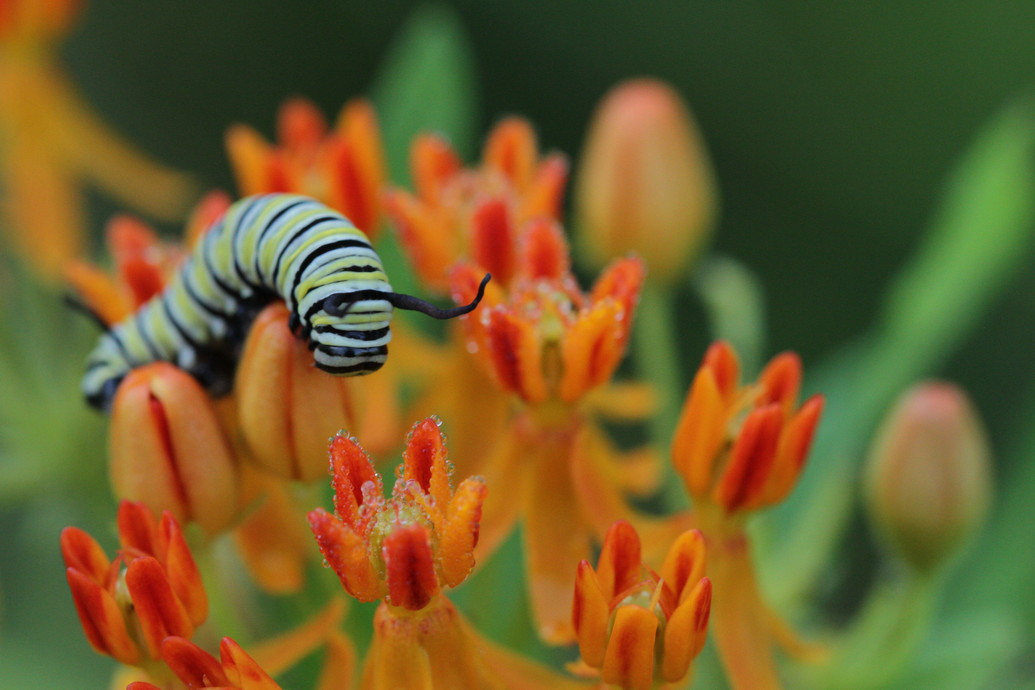 All life forms need resources, and the three most important resources needed by monarchs in their annual cycle are: nectar from flowers for the adults, both in the migratory and reproductive phases; shelter and water while overwintering; and milkweeds—food for their larvae after the breeding phase.
All life forms need resources, and the three most important resources needed by monarchs in their annual cycle are: nectar from flowers for the adults, both in the migratory and reproductive phases; shelter and water while overwintering; and milkweeds—food for their larvae after the breeding phase.


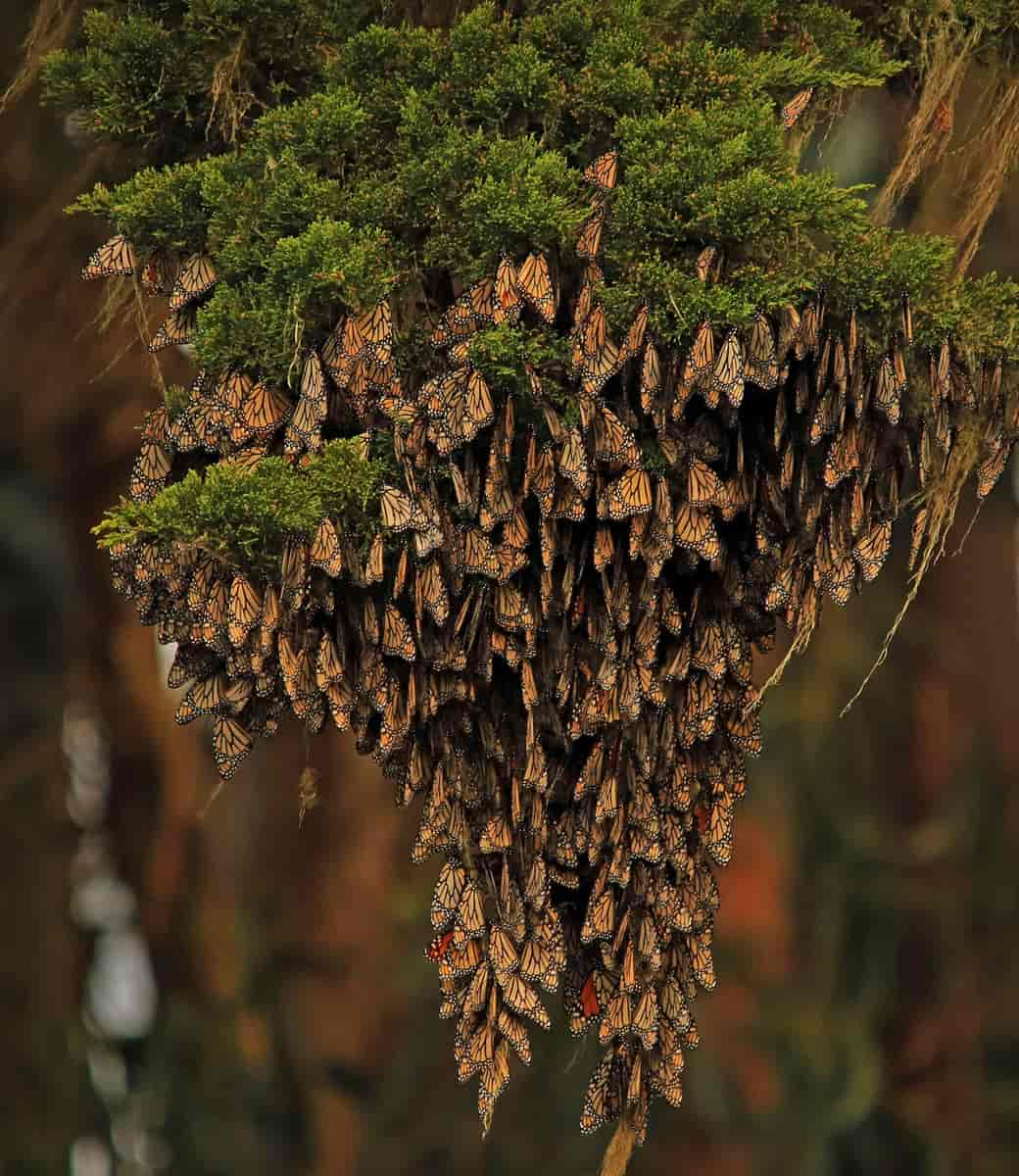 OYAMEL FORESTS AND MONARCHS
OYAMEL FORESTS AND MONARCHS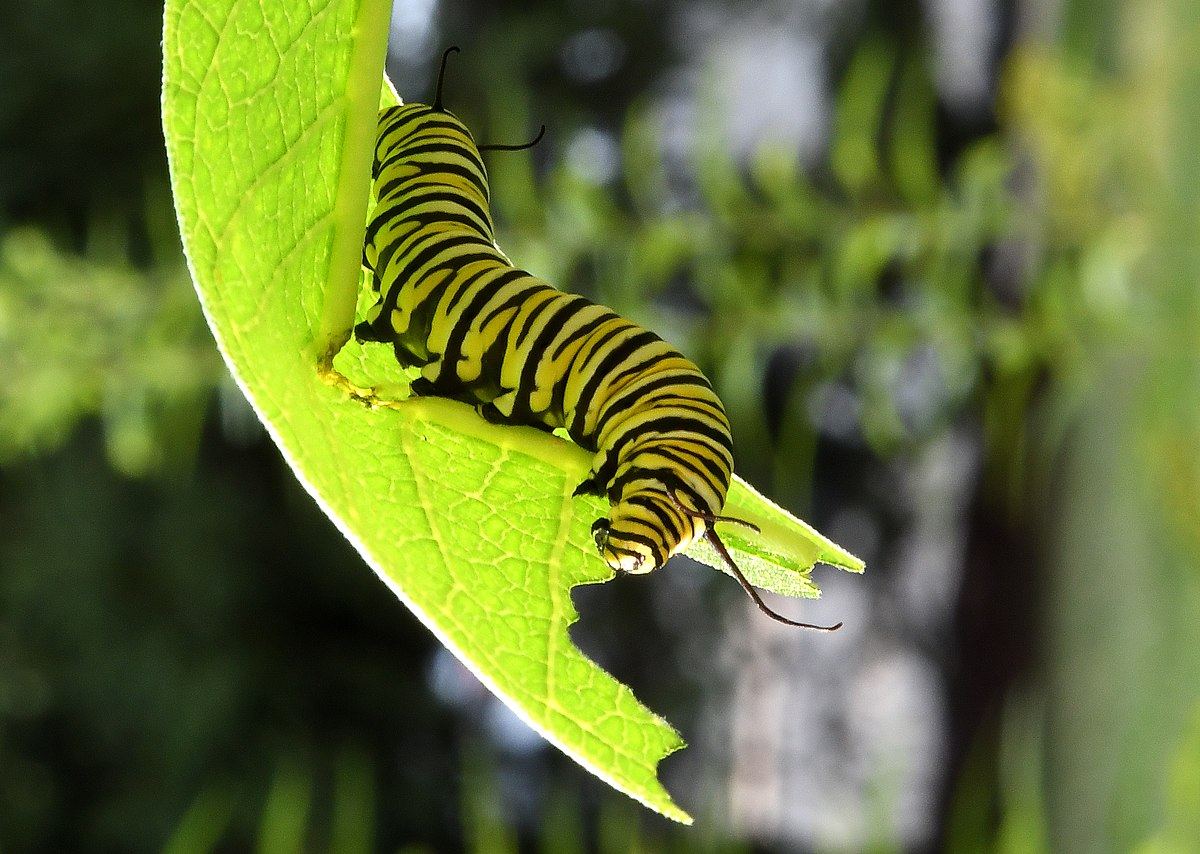 MILKWEED OFFERS PROTECTION FROM PREDATORS
MILKWEED OFFERS PROTECTION FROM PREDATORS MATING BEHAVIOR
MATING BEHAVIOR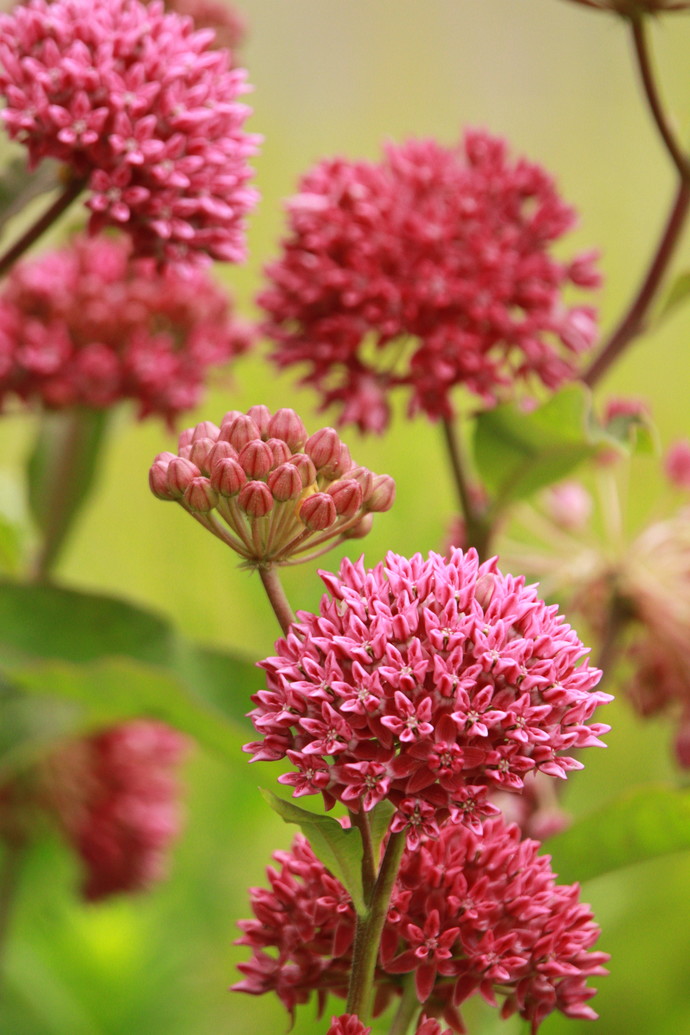 ENVIRONMENTAL FACTORS
ENVIRONMENTAL FACTORS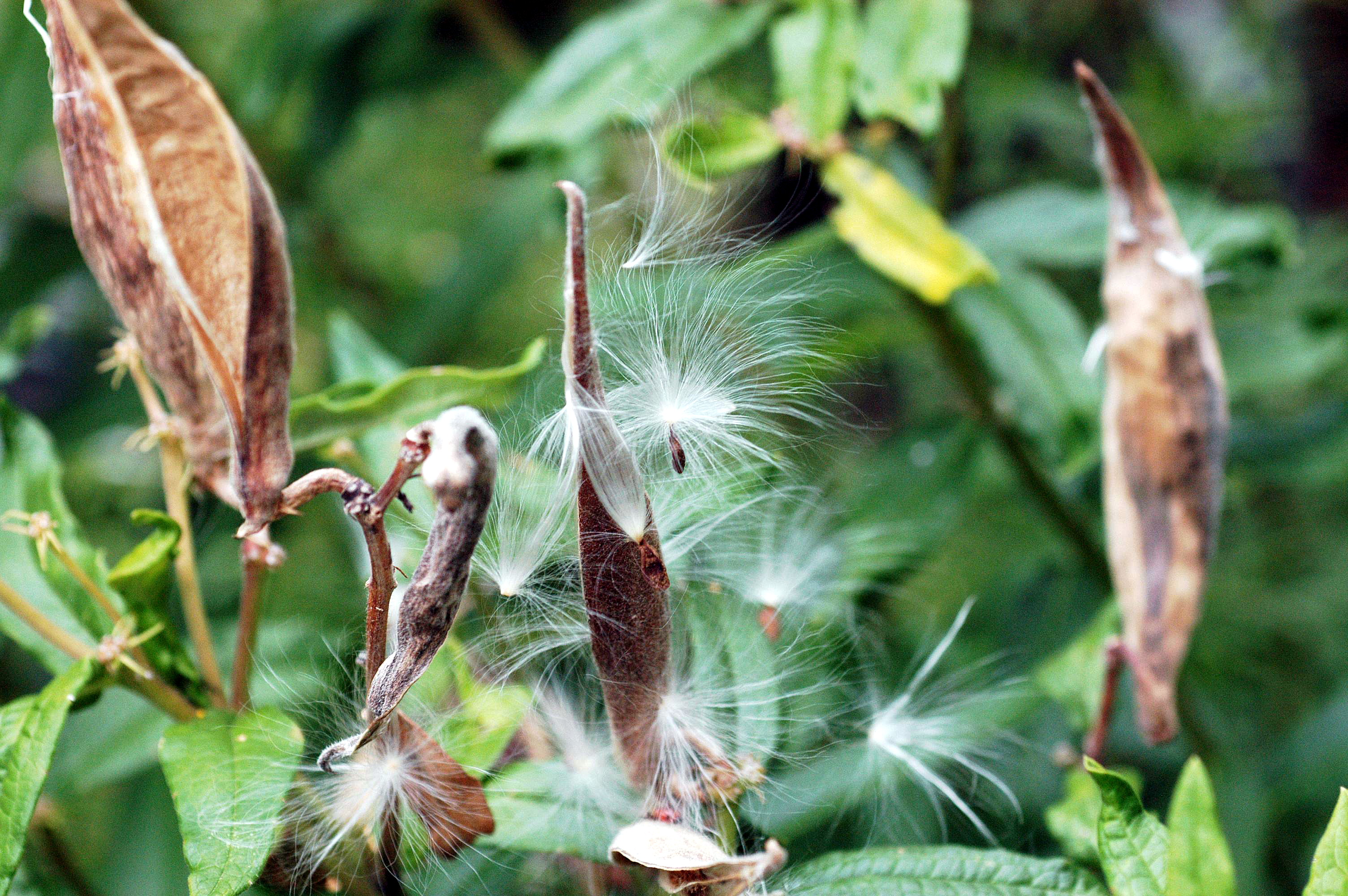 Milkweed plants produce distinct seed pods in late summer. Typically these pods are horn shaped, or otherwise long, narrow, and tubular. Pods are filled with seeds and floss, a material attached to the seed that allows it to travel on the wind, similar to dandelion seed. When the seed is ready to disperse, the floss will expand, causing the pod to burst. For those wishing to collect seed, this floss can be problematic, creating a messy barrier to gathering large amounts of viable seed. There are several options for separating the floss, but the best option is to plan your timing so that you are able to easily remove the seed as soon as it is mature, but before the silky floss has expanded. Milkweed seed should be brown and leathery when mature, though the pods themselves may still be green.
Milkweed plants produce distinct seed pods in late summer. Typically these pods are horn shaped, or otherwise long, narrow, and tubular. Pods are filled with seeds and floss, a material attached to the seed that allows it to travel on the wind, similar to dandelion seed. When the seed is ready to disperse, the floss will expand, causing the pod to burst. For those wishing to collect seed, this floss can be problematic, creating a messy barrier to gathering large amounts of viable seed. There are several options for separating the floss, but the best option is to plan your timing so that you are able to easily remove the seed as soon as it is mature, but before the silky floss has expanded. Milkweed seed should be brown and leathery when mature, though the pods themselves may still be green.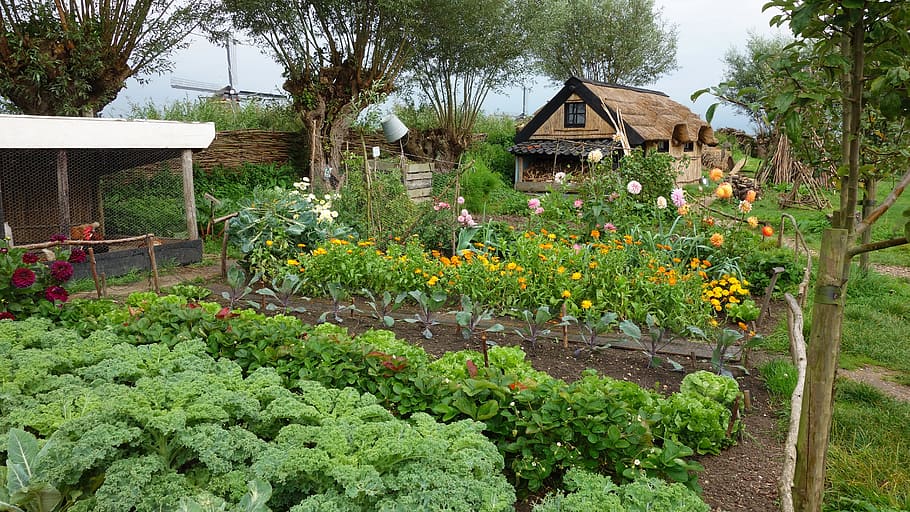
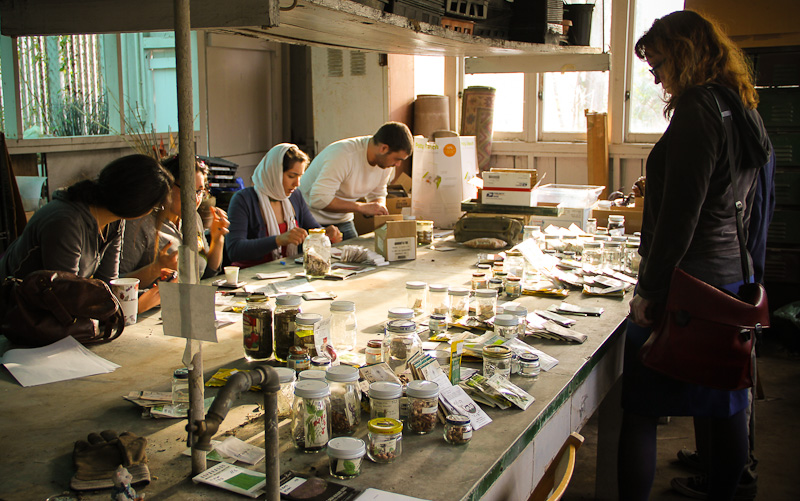 To me, saving seeds is as natural as planting seeds, but it’s a practice that has fallen to the wayside on many gardeners’ annual to-do lists. I suppose it is easy to just buy new seeds each year, but homegrown seeds will perform better than commercially purchased varieties; they’ve begun to adapt to our gardens. If we think about it, all that our plants truly want to accomplish is the production of seeds to ensure the next generation of plants, and they’ll do whatever it takes to make sure this happens. Seeds harvested from our own gardens are adjusting to our microclimates, pest and weed pressures, and even our gardening techniques. They’re making themselves at home. By saving the seeds from our best performing plants, we’ll get even better plants next season. Whether it’s the most beautiful flower, the most fragrant herb or the tastiest tomato you’ve ever had, selecting for the traits that you enjoy will ensure that those traits are passed along into the next generation.
To me, saving seeds is as natural as planting seeds, but it’s a practice that has fallen to the wayside on many gardeners’ annual to-do lists. I suppose it is easy to just buy new seeds each year, but homegrown seeds will perform better than commercially purchased varieties; they’ve begun to adapt to our gardens. If we think about it, all that our plants truly want to accomplish is the production of seeds to ensure the next generation of plants, and they’ll do whatever it takes to make sure this happens. Seeds harvested from our own gardens are adjusting to our microclimates, pest and weed pressures, and even our gardening techniques. They’re making themselves at home. By saving the seeds from our best performing plants, we’ll get even better plants next season. Whether it’s the most beautiful flower, the most fragrant herb or the tastiest tomato you’ve ever had, selecting for the traits that you enjoy will ensure that those traits are passed along into the next generation.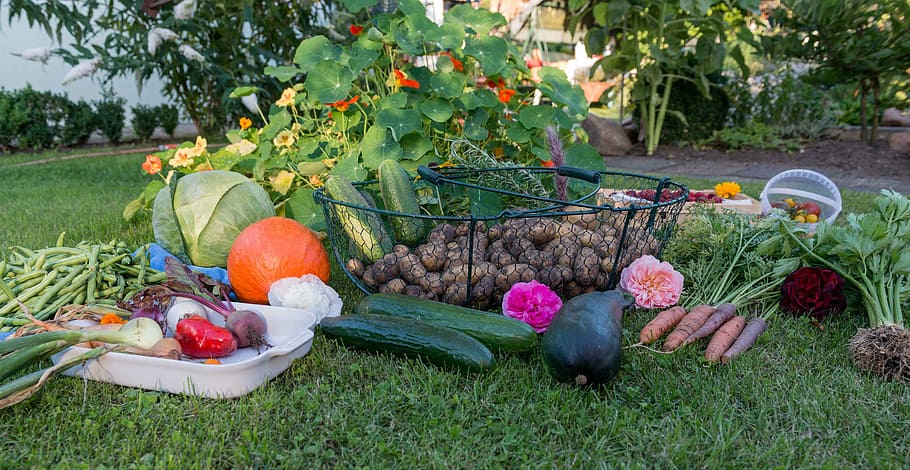 While my focus with these programs was providing communities with seeds to grow food, the numbers at the end of each season showed that participants were more interested in growing herbs and flowers than they were fruits and veggies. Maybe it was due to limited growing space, or just personal preference, but either way, I had to adjust my seed saving curriculum to match the needs of the growers in attendance at my workshops. This was fun for me, since I had to refresh myself on the different equipment and techniques needed to process these often very small seeds, and I was reminded of something I learned many years ago, as a young boy munching on cucumbers in someone else’s garden. Everyone likes to grow something different, and it’s these differences that make every garden special. Lean in and grow whatever you love and you’ll harvest baskets full of joy for years to come.
While my focus with these programs was providing communities with seeds to grow food, the numbers at the end of each season showed that participants were more interested in growing herbs and flowers than they were fruits and veggies. Maybe it was due to limited growing space, or just personal preference, but either way, I had to adjust my seed saving curriculum to match the needs of the growers in attendance at my workshops. This was fun for me, since I had to refresh myself on the different equipment and techniques needed to process these often very small seeds, and I was reminded of something I learned many years ago, as a young boy munching on cucumbers in someone else’s garden. Everyone likes to grow something different, and it’s these differences that make every garden special. Lean in and grow whatever you love and you’ll harvest baskets full of joy for years to come.  Bevin Cohen is an award-winning author, herbalist, owner of Small House Farm, and host of the popular
Bevin Cohen is an award-winning author, herbalist, owner of Small House Farm, and host of the popular  The summer solstice is a time when the natural world is ablaze with life, when the energies of light and warmth are at their peak. This celestial dance of light and shadow held profound significance for our ancestors. It was a time of celebration and thanks for the coming harvests, and a time to relax for a bit and play. Still today, some cultures celebrate by kindling fires, symbolizing the transformative power of the sun, and many communities gather to dance, sing, and rejoice in the abundance of the season.
The summer solstice is a time when the natural world is ablaze with life, when the energies of light and warmth are at their peak. This celestial dance of light and shadow held profound significance for our ancestors. It was a time of celebration and thanks for the coming harvests, and a time to relax for a bit and play. Still today, some cultures celebrate by kindling fires, symbolizing the transformative power of the sun, and many communities gather to dance, sing, and rejoice in the abundance of the season.  These words encapsulate the essence of the magical world that many of us have created within our own herb gardens.
These words encapsulate the essence of the magical world that many of us have created within our own herb gardens.  It’s a very good time to infuse our herb gardens with the essence of this magical energy. Imagine the ancient voices whispering in your ear, guiding your hands, and filling your heart with ancestral awareness.
It’s a very good time to infuse our herb gardens with the essence of this magical energy. Imagine the ancient voices whispering in your ear, guiding your hands, and filling your heart with ancestral awareness.  The summer solstice is always a magical time for me, a time of deep reflection and celebration. May the day serve as a reminder of the abundant beauty that surrounds us and the intricate dance of life that we are all a part of, and may your herb garden always be a testament to the enduring power of nature, the wisdom of ancient traditions, and the magic that resides within your own heart.
The summer solstice is always a magical time for me, a time of deep reflection and celebration. May the day serve as a reminder of the abundant beauty that surrounds us and the intricate dance of life that we are all a part of, and may your herb garden always be a testament to the enduring power of nature, the wisdom of ancient traditions, and the magic that resides within your own heart. I love being able to step out into the garden and snip fresh herbs whenever I need them. Yesterday, I was making ham and bean stew in the crockpot. I was inspired to add thyme so I cut off a few sprigs from the thyme growing in the front of the house. I looked around and snipped even more herbs: cutting celery, oregano, sage, and rosemary. Except for the cutting celery, these are perennial herbs that should be in everyone’s garden. They can be tucked in the ornamental bed just like any other perennial plant. In the spring, you can purchase the small plants from a nursery or you can ask a friend for a cutting or division. Once you have them in your garden, you can enjoy them year-round and nothing will bother them, not even deer.
I love being able to step out into the garden and snip fresh herbs whenever I need them. Yesterday, I was making ham and bean stew in the crockpot. I was inspired to add thyme so I cut off a few sprigs from the thyme growing in the front of the house. I looked around and snipped even more herbs: cutting celery, oregano, sage, and rosemary. Except for the cutting celery, these are perennial herbs that should be in everyone’s garden. They can be tucked in the ornamental bed just like any other perennial plant. In the spring, you can purchase the small plants from a nursery or you can ask a friend for a cutting or division. Once you have them in your garden, you can enjoy them year-round and nothing will bother them, not even deer. Botanically speaking, the cutting celery is a biennial. It puts its energy into foliage the first year and then into flowering and setting seed the next year. In my Zone 7 garden, I can harvest the foliage any time so it acts like a perennial. I am sure it is because the seed drops, germinates, and produces new plants each year. I always grow it in one place, under the dappled shade of a tree and where a tiny stream runs through after it rains. This gives the celery enough moisture. The plant is smaller with thinner stems than store-bought stalk celery (it is the center plant in the bowl in the photo). The taste is like stalk celery but with a peppery, pungent bite. It can be used fresh in a salad, in sandwiches, or sautéed with onions and carrots, which is what I did for the bean stew.
Botanically speaking, the cutting celery is a biennial. It puts its energy into foliage the first year and then into flowering and setting seed the next year. In my Zone 7 garden, I can harvest the foliage any time so it acts like a perennial. I am sure it is because the seed drops, germinates, and produces new plants each year. I always grow it in one place, under the dappled shade of a tree and where a tiny stream runs through after it rains. This gives the celery enough moisture. The plant is smaller with thinner stems than store-bought stalk celery (it is the center plant in the bowl in the photo). The taste is like stalk celery but with a peppery, pungent bite. It can be used fresh in a salad, in sandwiches, or sautéed with onions and carrots, which is what I did for the bean stew. Thyme is a perennial shrub with very small leaves (in upper left quadrant in the bowl). It is only about six inches tall, making it a good groundcover. Because the thin wiry stems root easily, it is a great plant to have in order to cut and root stems in the spring to place in containers with summer annuals for the “spiller” effect. Culinary thyme remains green and above ground all winter long. It can be harvested and used in the kitchen any time of the year. There are variegated forms of thyme as well as flavored thymes such as coconut, lemon, and spicy orange. Thyme prefers full sun and well-drained soil. The leaves can be used fresh or dried.
Thyme is a perennial shrub with very small leaves (in upper left quadrant in the bowl). It is only about six inches tall, making it a good groundcover. Because the thin wiry stems root easily, it is a great plant to have in order to cut and root stems in the spring to place in containers with summer annuals for the “spiller” effect. Culinary thyme remains green and above ground all winter long. It can be harvested and used in the kitchen any time of the year. There are variegated forms of thyme as well as flavored thymes such as coconut, lemon, and spicy orange. Thyme prefers full sun and well-drained soil. The leaves can be used fresh or dried. Oregano is an herbaceous perennial (in bottom part of bowl). It grows back every spring, reaches about a foot tall, flowers, and then dies back in the fall. Usually though with our mild winters, there are green leaves at the base year-round. In the early spring I cut back the dead flower stalks and remove the debris so fresh new growth can push through. Mine is in full sun and well-drained soil. Oregano is a great plant to have in the garden for the culinary use as well as the flowers. The flowers are small but attract beneficial insects and pollinators. Oregano leaves can be used fresh or dried and we use them for the bean stew, pizza, pasta sauce, poultry rub, and stuffing.
Oregano is an herbaceous perennial (in bottom part of bowl). It grows back every spring, reaches about a foot tall, flowers, and then dies back in the fall. Usually though with our mild winters, there are green leaves at the base year-round. In the early spring I cut back the dead flower stalks and remove the debris so fresh new growth can push through. Mine is in full sun and well-drained soil. Oregano is a great plant to have in the garden for the culinary use as well as the flowers. The flowers are small but attract beneficial insects and pollinators. Oregano leaves can be used fresh or dried and we use them for the bean stew, pizza, pasta sauce, poultry rub, and stuffing. Sage is a woody shrub, about one to two feet tall. There are many types of sage but if you want to make sure you are purchasing culinary sage, look for
Sage is a woody shrub, about one to two feet tall. There are many types of sage but if you want to make sure you are purchasing culinary sage, look for  I have the ‘Arp’ rosemary plant in full sun, on the southern side of the house in well drained soil. It grows so well I trim it back every year to keep it in proportion to the rest of the front garden. Rosemary blooms in the cool months and the purple/blue flowers are edible. The leaves are so flavorful you do not need many of them and they can be used fresh or dried. This plant is easy to propagate by stem cuttings or layering. Rosemary is versatile because the stems or branches can be used as well as the foliage and flowers. Line a platter with branches and then put a roast on top or use them as stirrers in drinks. The leaves can be used in pasta sauce, yeast breads like focaccia, roasted potatoes, poultry rub, and rosemary butter for vegetables (the cuttings are on the right side of the bowl).
I have the ‘Arp’ rosemary plant in full sun, on the southern side of the house in well drained soil. It grows so well I trim it back every year to keep it in proportion to the rest of the front garden. Rosemary blooms in the cool months and the purple/blue flowers are edible. The leaves are so flavorful you do not need many of them and they can be used fresh or dried. This plant is easy to propagate by stem cuttings or layering. Rosemary is versatile because the stems or branches can be used as well as the foliage and flowers. Line a platter with branches and then put a roast on top or use them as stirrers in drinks. The leaves can be used in pasta sauce, yeast breads like focaccia, roasted potatoes, poultry rub, and rosemary butter for vegetables (the cuttings are on the right side of the bowl). Peggy Riccio is the owner of
Peggy Riccio is the owner of  Long before humans roamed the forests, fairies are said to have taken up residence in the cavities of trees, forming fairy houses where they took refuge. Dating back to the Middle Ages, fairy folklore says that these little beings possess supernatural powers.
Long before humans roamed the forests, fairies are said to have taken up residence in the cavities of trees, forming fairy houses where they took refuge. Dating back to the Middle Ages, fairy folklore says that these little beings possess supernatural powers. 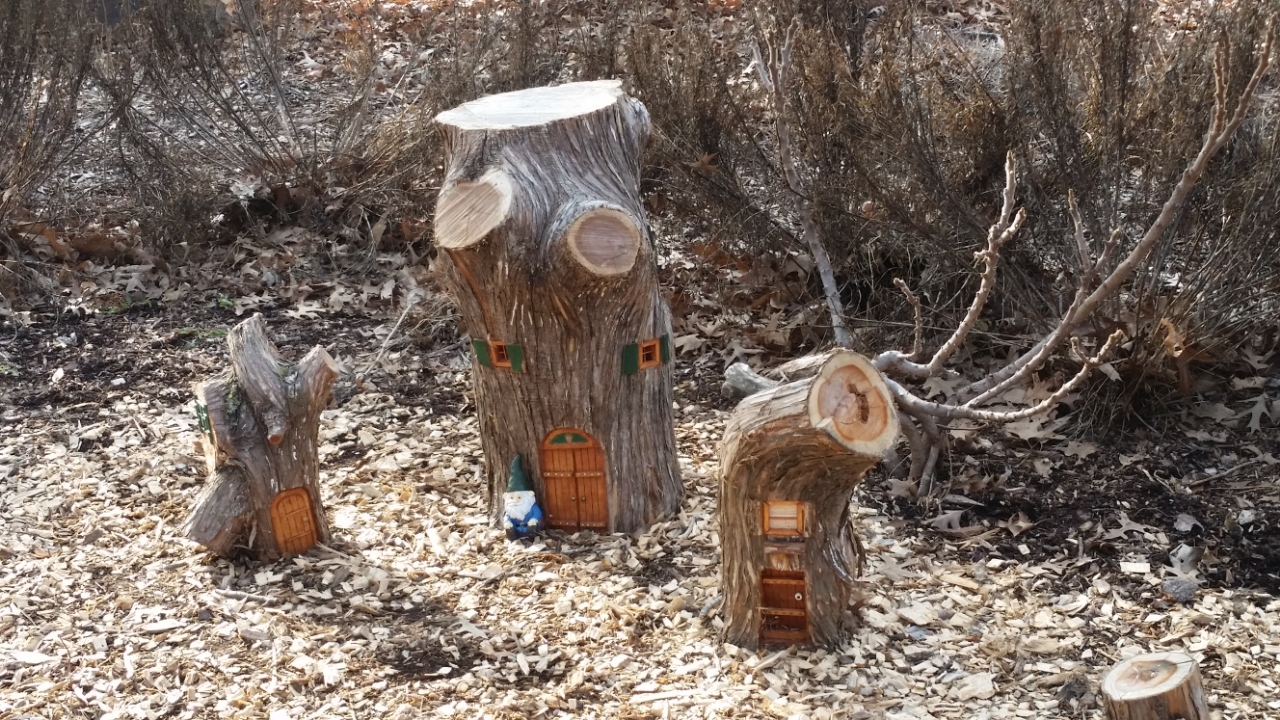 The first step to creating a magical miniature garden is to dream up what you want the garden to be. A good way to do that is to start with a theme. Just like when you throw a party, knowing the theme allows you to plan and design the garden better.
The first step to creating a magical miniature garden is to dream up what you want the garden to be. A good way to do that is to start with a theme. Just like when you throw a party, knowing the theme allows you to plan and design the garden better.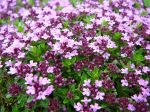

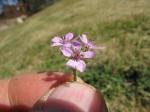
 For your cottage garden, you can’t use large flowering plants like foxglove or larkspur as you’d find in a human-sized landscape, but you can bring flowers to your Lilliputian paradise with small blooming plants like Erodium spp. (stork’s bill, heron’s bill) and miniature roses (Rosa sp.). Many trailing herbs, such as the aptly named ‘Elfin’ thyme, also flower in the spring. Polka Dot Plant (Hypoestes) adds color to your fairy garden all year long.
For your cottage garden, you can’t use large flowering plants like foxglove or larkspur as you’d find in a human-sized landscape, but you can bring flowers to your Lilliputian paradise with small blooming plants like Erodium spp. (stork’s bill, heron’s bill) and miniature roses (Rosa sp.). Many trailing herbs, such as the aptly named ‘Elfin’ thyme, also flower in the spring. Polka Dot Plant (Hypoestes) adds color to your fairy garden all year long.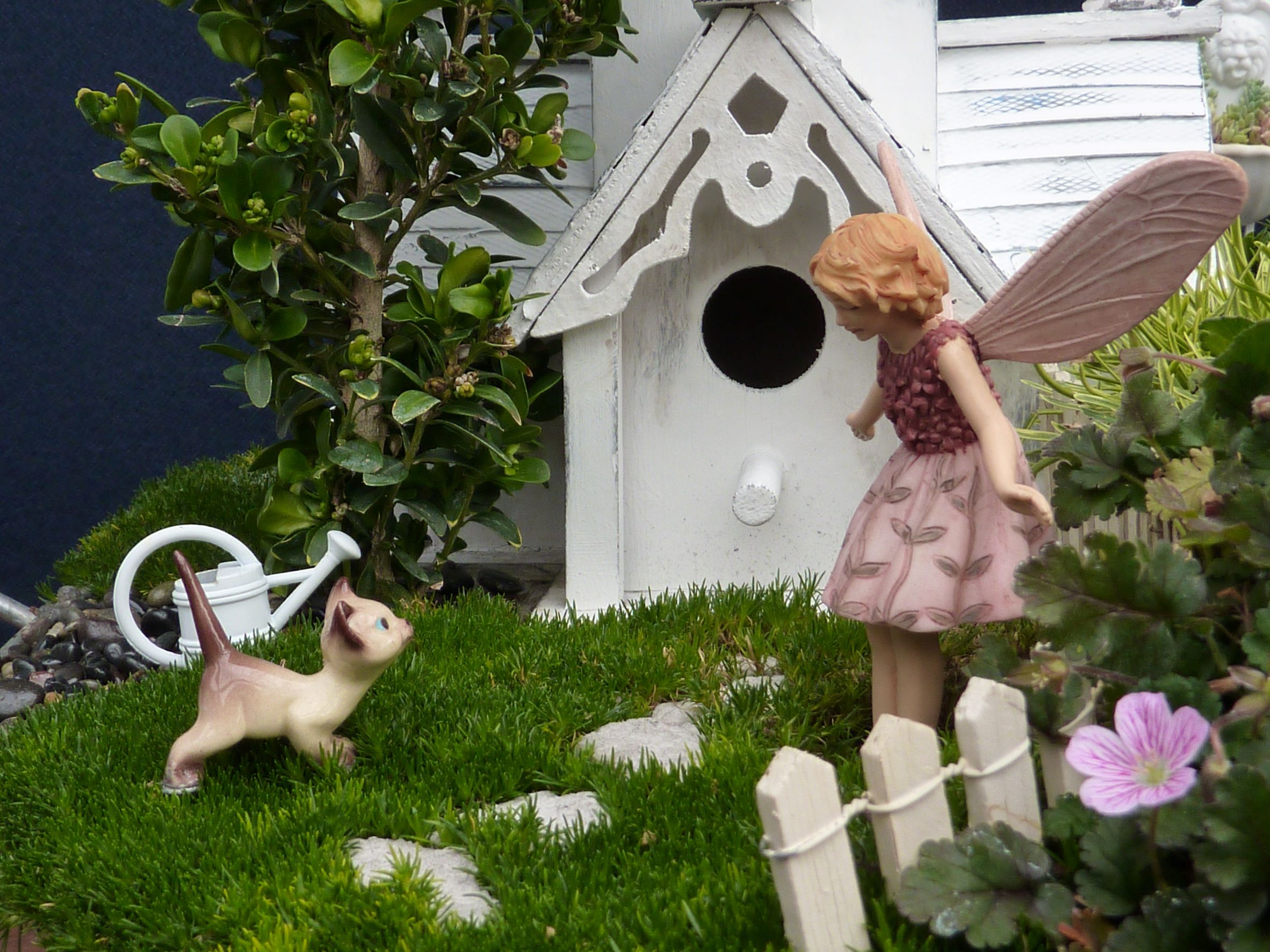 The way to put life into your fairy garden is to add some action. Set the stage in your fairy garden by creating the illusion that something is going on. The secret is to give the viewer the “idea” of movement. What creates that illusion is how the fairy relates to her (or his) environment.
The way to put life into your fairy garden is to add some action. Set the stage in your fairy garden by creating the illusion that something is going on. The secret is to give the viewer the “idea” of movement. What creates that illusion is how the fairy relates to her (or his) environment. Choose a container with drainage holes that has enough space to arrange your planned scene and is at least eight inches deep. Use a high-quality potting soil. When choosing plants, ensure all of them are either full sun or shade.
Choose a container with drainage holes that has enough space to arrange your planned scene and is at least eight inches deep. Use a high-quality potting soil. When choosing plants, ensure all of them are either full sun or shade.  Have you ever said to yourself or others, “My garden is my therapy?” If you have noticed that you feel more relaxed and even rejuvenated after imbibing the beauty, fragrance, and even hard work in your garden, you are not alone! Gardening provides physical exercise, as well as a rewarding intellectual and emotional connection. When recognized on a personal level, it is not a stretch to see how people in a wide variety of care environments who are facing diverse personal challenges can benefit from professionally facilitated horticultural experiences as well.
Have you ever said to yourself or others, “My garden is my therapy?” If you have noticed that you feel more relaxed and even rejuvenated after imbibing the beauty, fragrance, and even hard work in your garden, you are not alone! Gardening provides physical exercise, as well as a rewarding intellectual and emotional connection. When recognized on a personal level, it is not a stretch to see how people in a wide variety of care environments who are facing diverse personal challenges can benefit from professionally facilitated horticultural experiences as well. The profession of horticultural therapy (HT) was formalized in the early 1970s, though people have sought out gardens and gardening activities for respite and health recovery well before then. The practice of horticultural therapy involves a plant-based activity, a horticultural therapist, client(s), and identified treatment goals and objectives. Either in a group or as individuals, clients participate in outdoor or indoor plant-based activities designed to address their particular health or wellness needs. For example, patients in a rehabilitation hospital can work on standing tolerance, dynamic balance, and coordination by transplanting tea herbs into a planter raised to a comfortable standing height. Later in the season, the patients are rewarded with familiar fragrances as they harvest the herbs to make herb teas and learn about the roles relaxation and stress management play in their recovery.
The profession of horticultural therapy (HT) was formalized in the early 1970s, though people have sought out gardens and gardening activities for respite and health recovery well before then. The practice of horticultural therapy involves a plant-based activity, a horticultural therapist, client(s), and identified treatment goals and objectives. Either in a group or as individuals, clients participate in outdoor or indoor plant-based activities designed to address their particular health or wellness needs. For example, patients in a rehabilitation hospital can work on standing tolerance, dynamic balance, and coordination by transplanting tea herbs into a planter raised to a comfortable standing height. Later in the season, the patients are rewarded with familiar fragrances as they harvest the herbs to make herb teas and learn about the roles relaxation and stress management play in their recovery. In another example, adults with brain injuries focus on pre-vocational skills, such as following increasingly complex directions, organizing their work space, and social skills needed for interacting appropriately with coworkers and supervisors, all while growing plants for a sale. They could be growing any plants for sale, but the sensory stimulation from herb plants increases motivation and inspires conversation with customers during the plant sale. I have noticed that HT sessions are often so enjoyable, even with focus and hard work, that participants can feel like they are taking a break from therapy. Yet, they realized real progress towards their goals and objectives.
In another example, adults with brain injuries focus on pre-vocational skills, such as following increasingly complex directions, organizing their work space, and social skills needed for interacting appropriately with coworkers and supervisors, all while growing plants for a sale. They could be growing any plants for sale, but the sensory stimulation from herb plants increases motivation and inspires conversation with customers during the plant sale. I have noticed that HT sessions are often so enjoyable, even with focus and hard work, that participants can feel like they are taking a break from therapy. Yet, they realized real progress towards their goals and objectives.  HT programs are found in diverse organizations addressing a wide range of physical, social, emotional, vocational, and wellness needs for people of all ages. I’ve always said, “If you have seen one horticultural therapy program, you have seen ONE horticultural therapy program!” The flexibility of this field means that programs are unique and creatively designed to fit lots of different organizations–and not all are health care. Most focus on some type of improvement, recovery, or function maintenance ultimately for improved independence and quality of life. Quite often, horticultural therapists co-treat with other clinicians, such as recreation or occupational therapists, speech and language pathologists, social workers, and vocational rehabilitation counselors.
HT programs are found in diverse organizations addressing a wide range of physical, social, emotional, vocational, and wellness needs for people of all ages. I’ve always said, “If you have seen one horticultural therapy program, you have seen ONE horticultural therapy program!” The flexibility of this field means that programs are unique and creatively designed to fit lots of different organizations–and not all are health care. Most focus on some type of improvement, recovery, or function maintenance ultimately for improved independence and quality of life. Quite often, horticultural therapists co-treat with other clinicians, such as recreation or occupational therapists, speech and language pathologists, social workers, and vocational rehabilitation counselors.  The other by-product of horticultural therapy programs is an environment with lots of plants! Imagine the impact plants have on senior living facilities, psychiatric hospitals, correction and juvenile detention facilities, veterans hospitals, and community support programs for people coping with grief, chronic illness, or cancer. When walking by a “lemon” garden, filled with lemon verbena, lemongrass, lemon basil, lemon thyme, lemon
The other by-product of horticultural therapy programs is an environment with lots of plants! Imagine the impact plants have on senior living facilities, psychiatric hospitals, correction and juvenile detention facilities, veterans hospitals, and community support programs for people coping with grief, chronic illness, or cancer. When walking by a “lemon” garden, filled with lemon verbena, lemongrass, lemon basil, lemon thyme, lemon  Editor’s Note: This article was originally posted March 9, 2018. We hope it inspires you as you plan your spring gardens!
Editor’s Note: This article was originally posted March 9, 2018. We hope it inspires you as you plan your spring gardens! No room to garden? Not a problem. Find a large container and plant your herbs or vegetables in that. Many nurseries make that easy by selling herbs and vegetables already growing in large containers. There is something uniquely satisfying about picking vegetables and herbs that you have grown yourself.
No room to garden? Not a problem. Find a large container and plant your herbs or vegetables in that. Many nurseries make that easy by selling herbs and vegetables already growing in large containers. There is something uniquely satisfying about picking vegetables and herbs that you have grown yourself.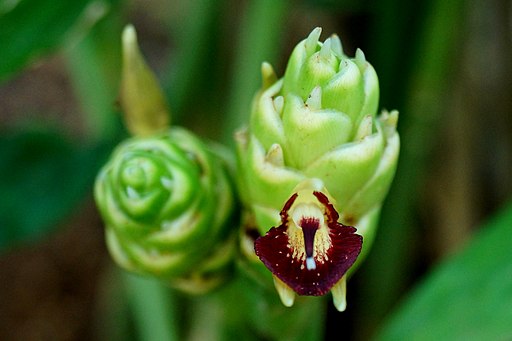 Ginger,
Ginger, 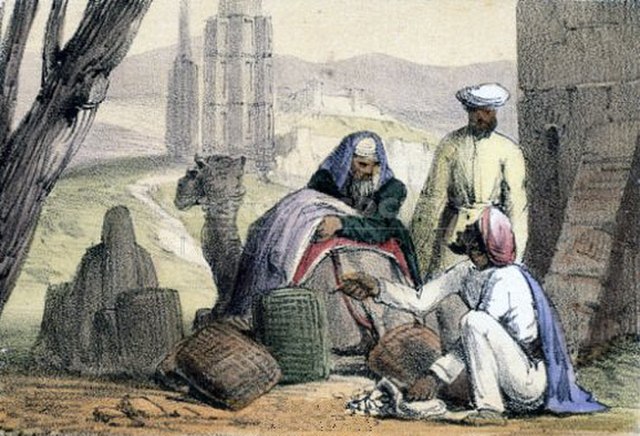 Ginger is a very old spice. The Indians and the Chinese used ginger as a medicine over 5000 years ago to treat a variety of ailments (Bode, 2011). It was also used to flavor foods long before history was even recorded. The Greeks and the Romans introduced ginger to Europe and the Mediterranean area by way of the Arab traders. It became an important spice in Europe until the fall of the Roman Empire. When the Arabs re-established trade routes after the fall, ginger found its way back into European apothecaries and kitchens. It is said that one pound of ginger cost the same as one sheep in the 13th and 14
Ginger is a very old spice. The Indians and the Chinese used ginger as a medicine over 5000 years ago to treat a variety of ailments (Bode, 2011). It was also used to flavor foods long before history was even recorded. The Greeks and the Romans introduced ginger to Europe and the Mediterranean area by way of the Arab traders. It became an important spice in Europe until the fall of the Roman Empire. When the Arabs re-established trade routes after the fall, ginger found its way back into European apothecaries and kitchens. It is said that one pound of ginger cost the same as one sheep in the 13th and 14 Today, growing culinary ginger is not limited to the hot, humid areas of Southeast Asia and India as it was long ago. Anyone living in southern growing areas (USDA Hardiness Zones 8 – 12) can grow it as a perennial. In colder areas, it can be grown in pots and brought indoors for the winter or grown in the ground, but dug up before frost and potted up for overwintering indoors in a cool location. It prefers a rich, moist soil, good drainage, and shade in the south, but full sun in the north. If starting plants from store-bought ginger rhizomes, the rhizome should be first soaked in water to remove any growth retardant that may have been used. Each rhizome can be cut into sections with at least two eyes and planted in soil. Harvest the rhizomes when the leaves begin to fade.
Today, growing culinary ginger is not limited to the hot, humid areas of Southeast Asia and India as it was long ago. Anyone living in southern growing areas (USDA Hardiness Zones 8 – 12) can grow it as a perennial. In colder areas, it can be grown in pots and brought indoors for the winter or grown in the ground, but dug up before frost and potted up for overwintering indoors in a cool location. It prefers a rich, moist soil, good drainage, and shade in the south, but full sun in the north. If starting plants from store-bought ginger rhizomes, the rhizome should be first soaked in water to remove any growth retardant that may have been used. Each rhizome can be cut into sections with at least two eyes and planted in soil. Harvest the rhizomes when the leaves begin to fade. 

 using ginger in some form: fresh, ground, crystallized, pickled, preserved, or dried.
using ginger in some form: fresh, ground, crystallized, pickled, preserved, or dried.  Unfortunately for ginger, there is a dark side to its history.
Unfortunately for ginger, there is a dark side to its history. 